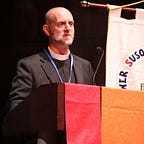Review and Reflection of “On Repentance and Repair” by Danya Ruttenberg
This is a brand new book, being published in 2022, yet the content of it is timeless. Ruttenberg has identified that we live in a culture that is in great need of repentance and repair. I don’t think this is controversial. The question is how? Ruttenberg looks at one model from Maimonides, a 12th century Jewish philosopher and teacher of the Torah, and applies the teaching to what it might look like for us in the 21st century in America. Overall, I found this book to be very enlightening, healing, and opening the reader to seeing possibilities of repair that are so needed in our society. Ruttenberg presents a model — it’s out job to take that model and apply it. Within the book Ruttenberg applies the model to interpersonal relationships, as well as to institutions, and even to nations. And there are varying levels of healing that she highlights — which offer hope to the reader.
First, I want to just comment on the subtitle of the book — “Making amends in an unapologetic world.” Wow. There’s a lot there just in the subtitle. It’s a recognition of how cold the world is, but also a recognition that we don’t have to be cold in it. This book offers a path for people to experience healing in a world that can often be cruel for the sake of cruelty. There is a better way and Ruttenberg shows us a way.
She starts on page 3 with this statement and a series of important questions:
